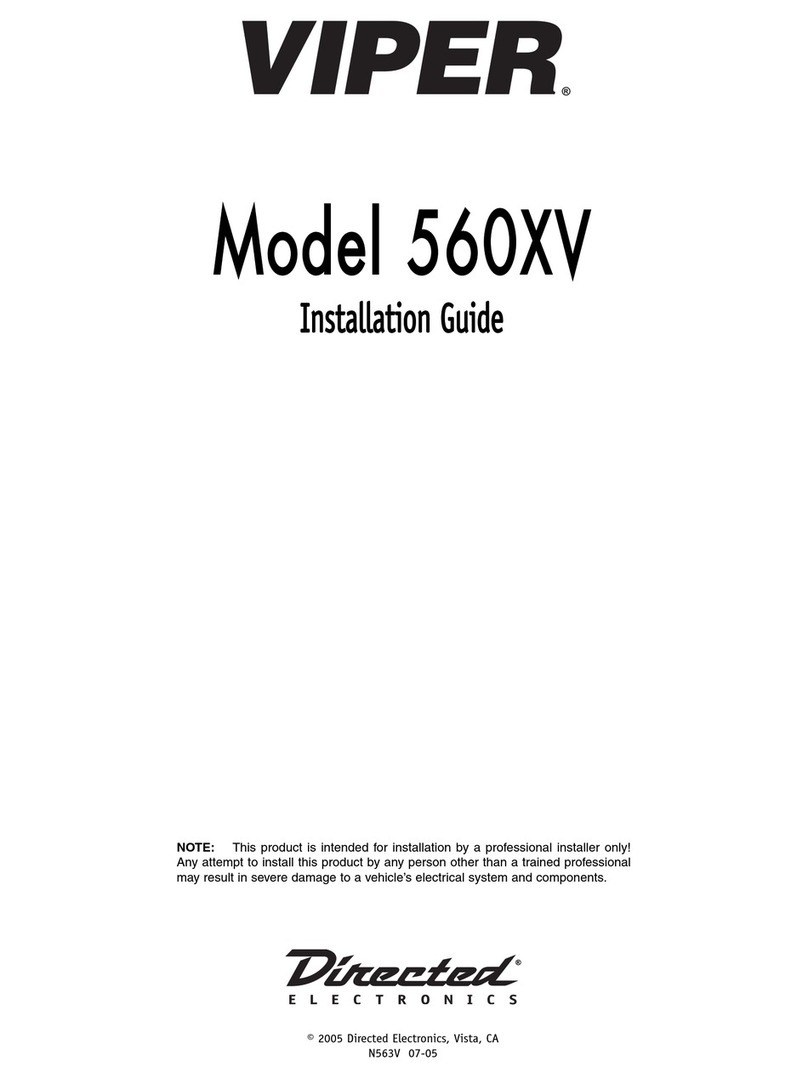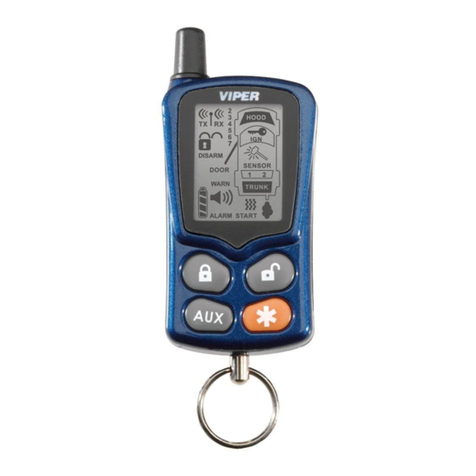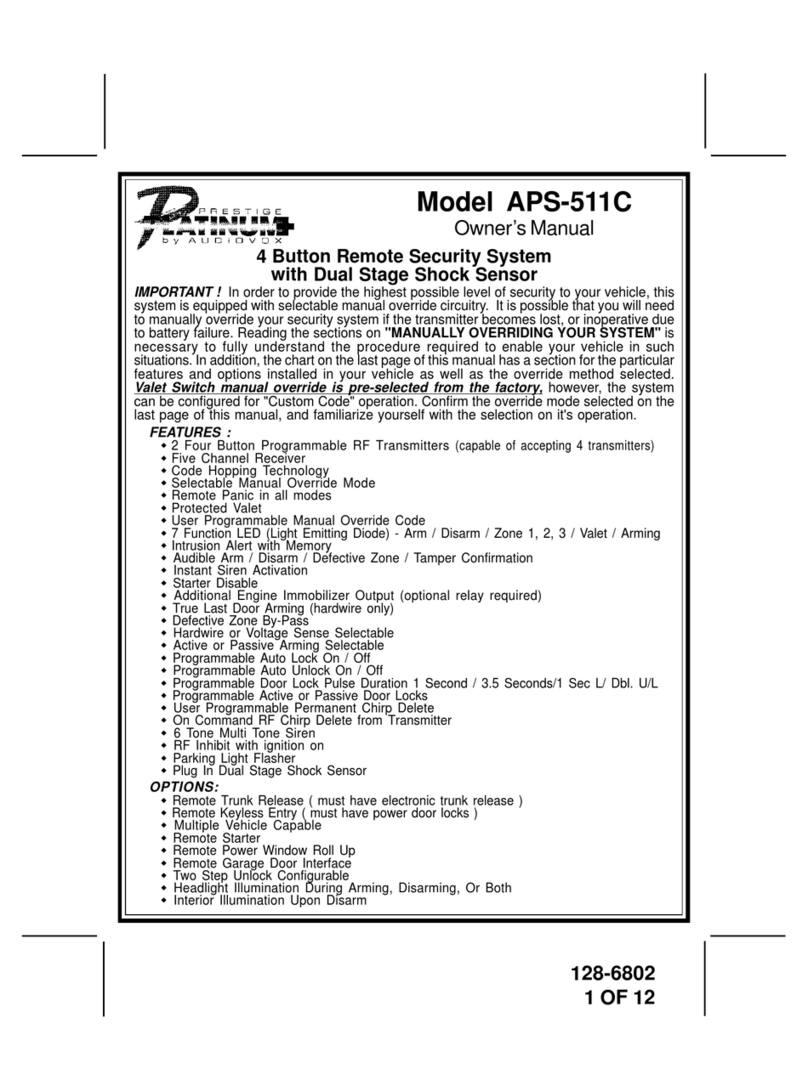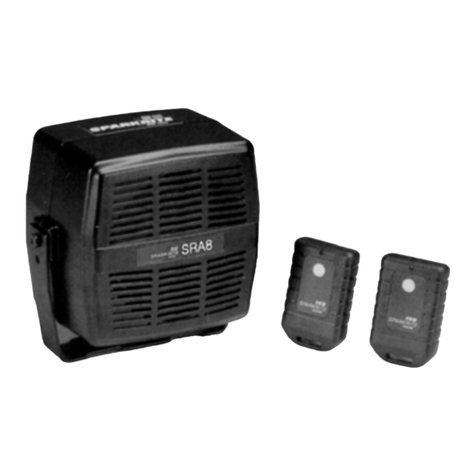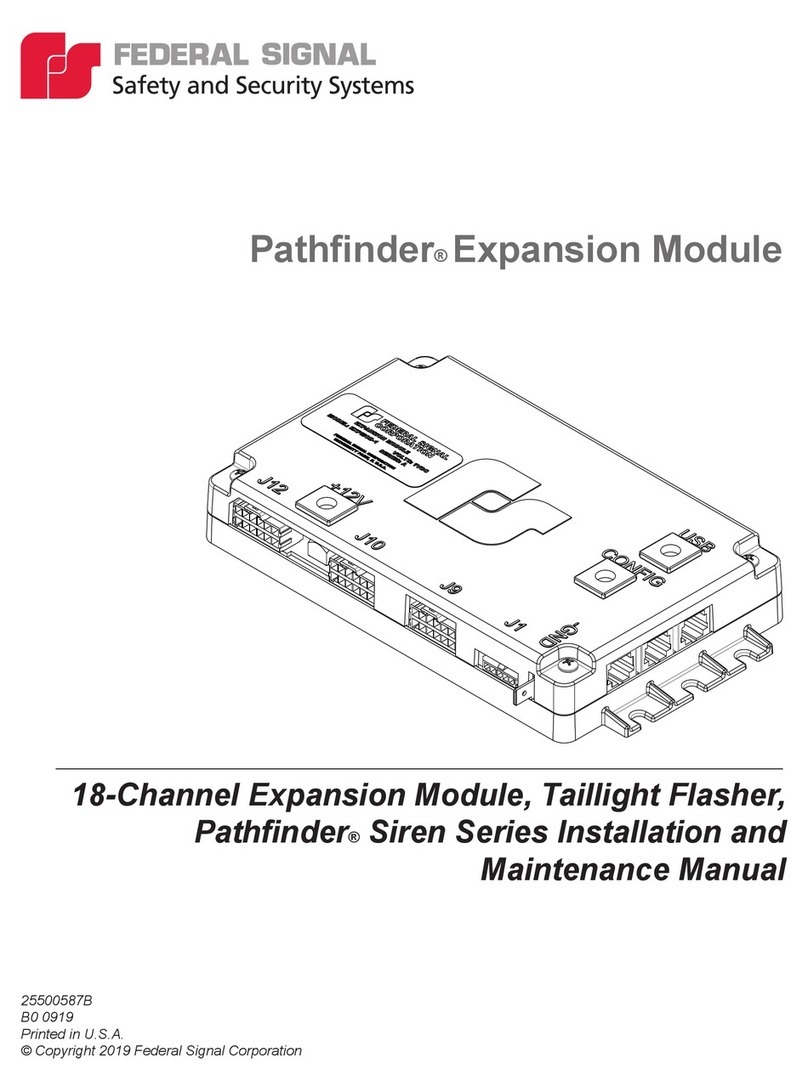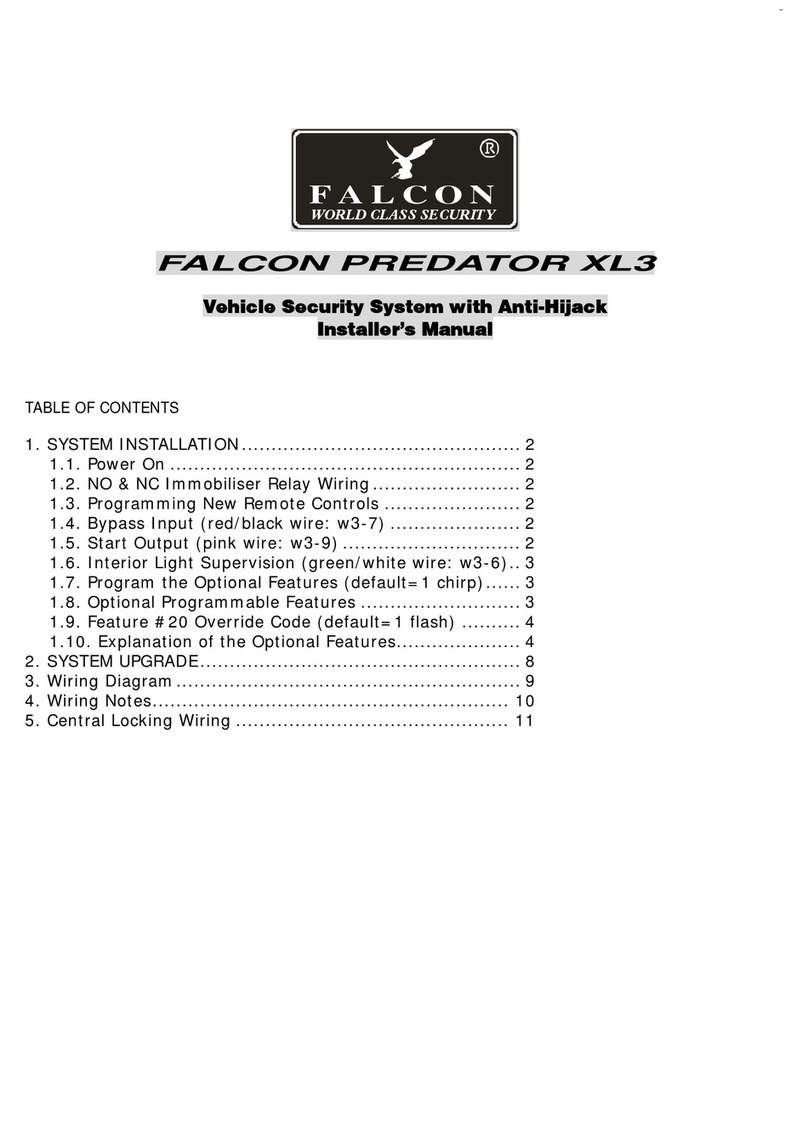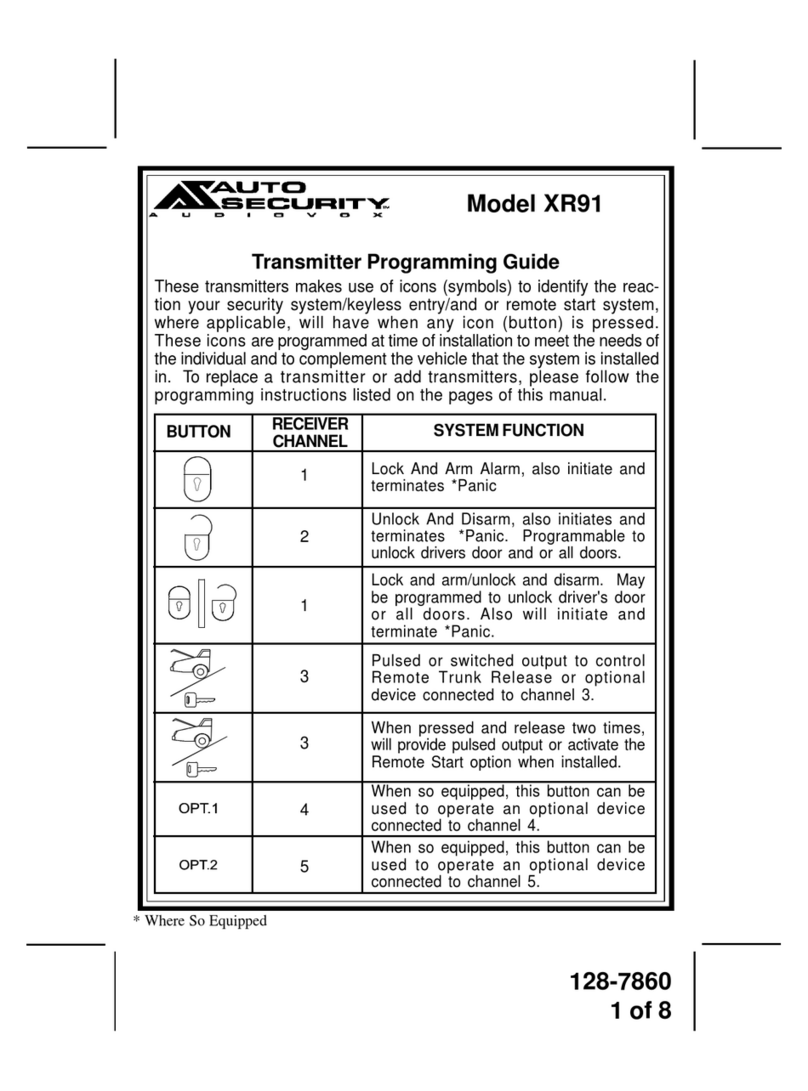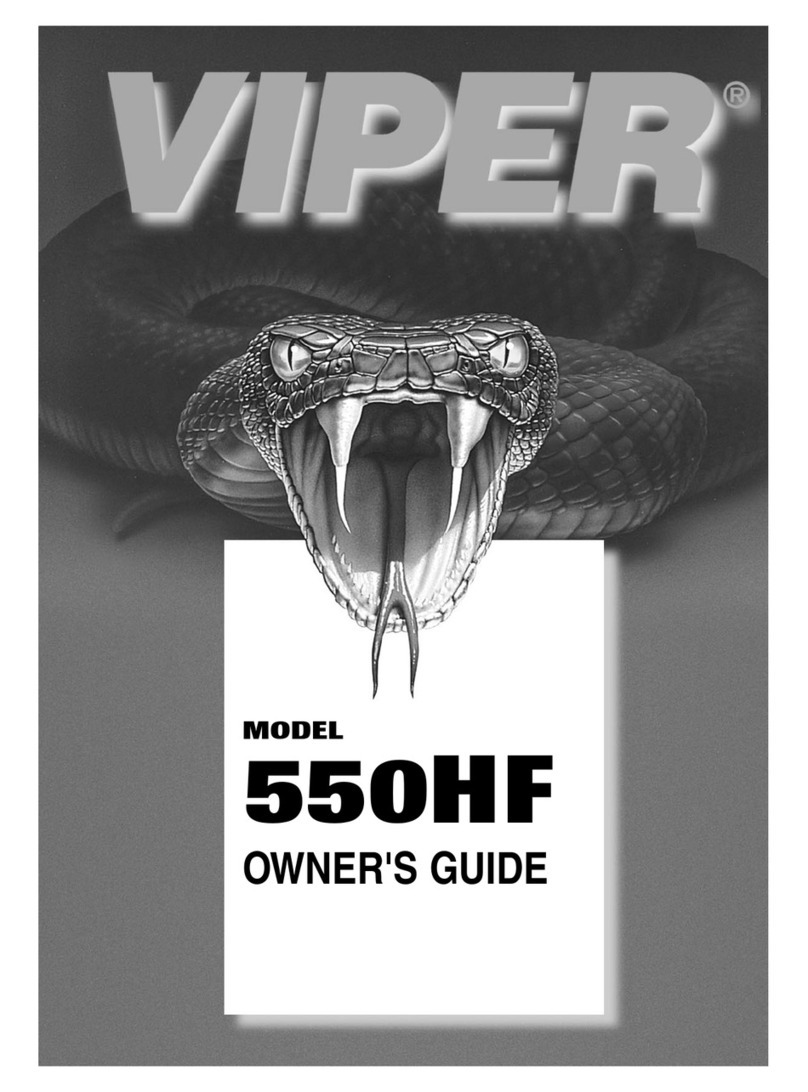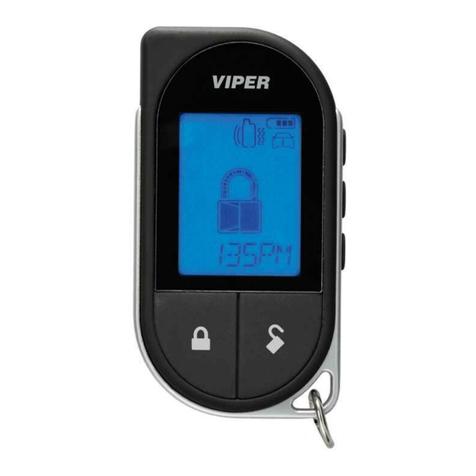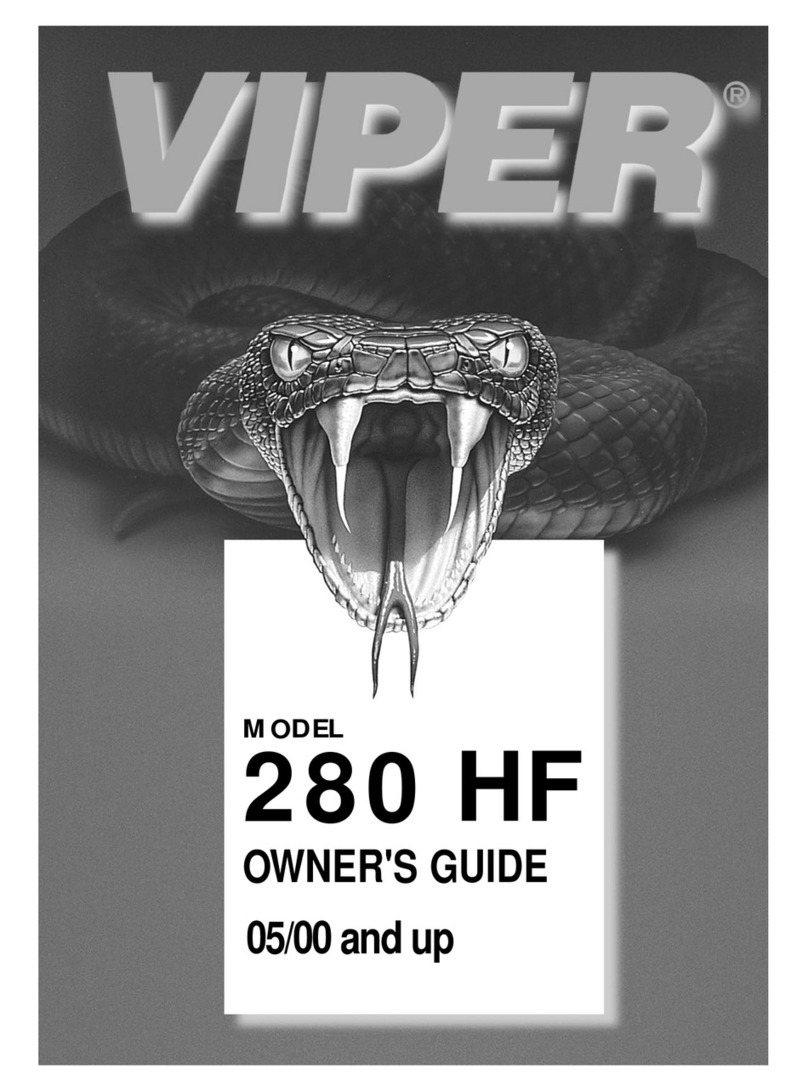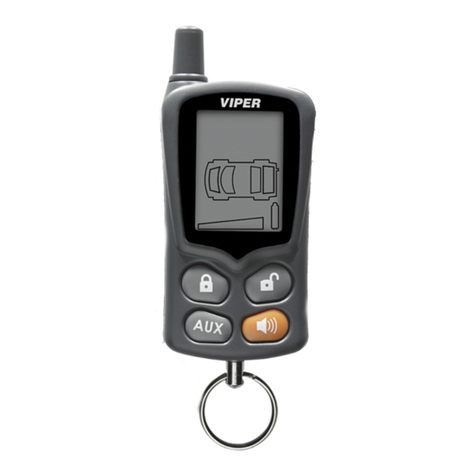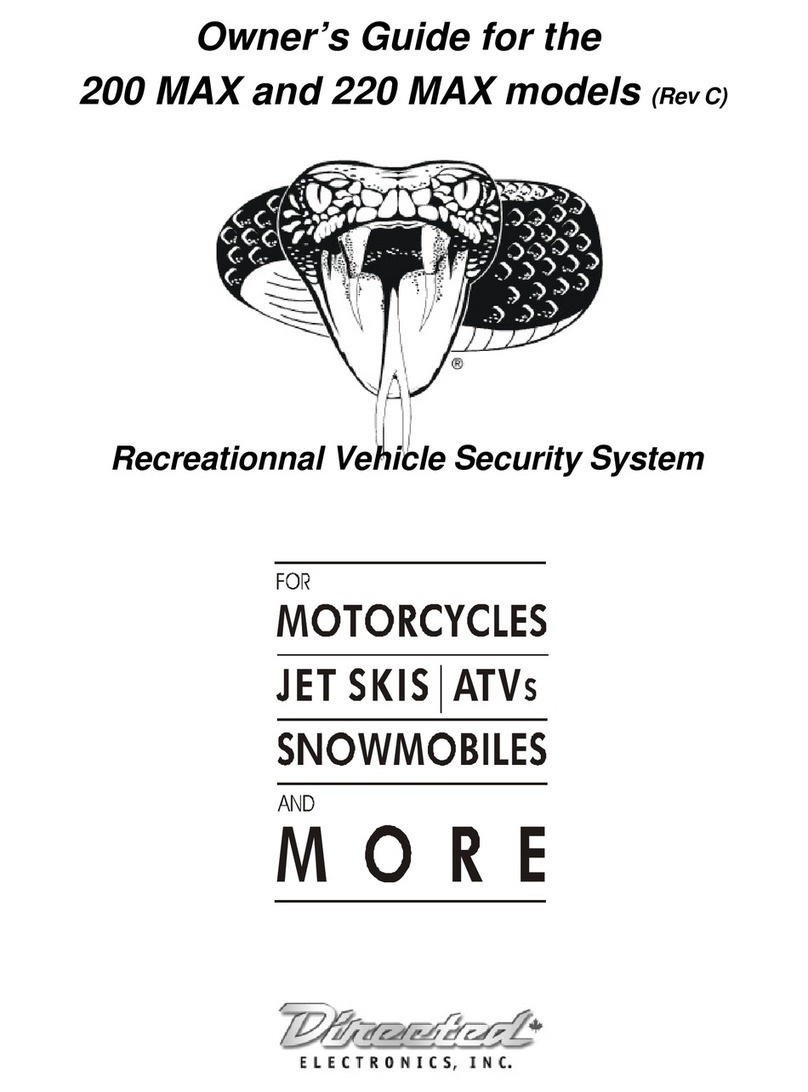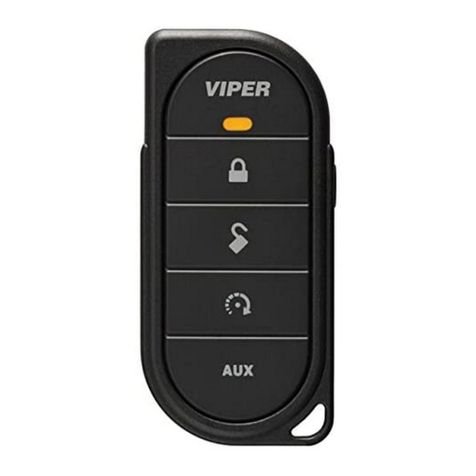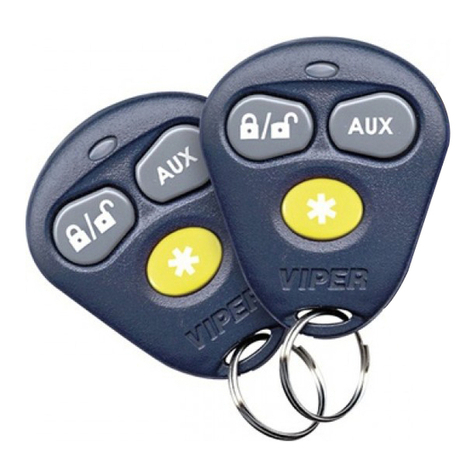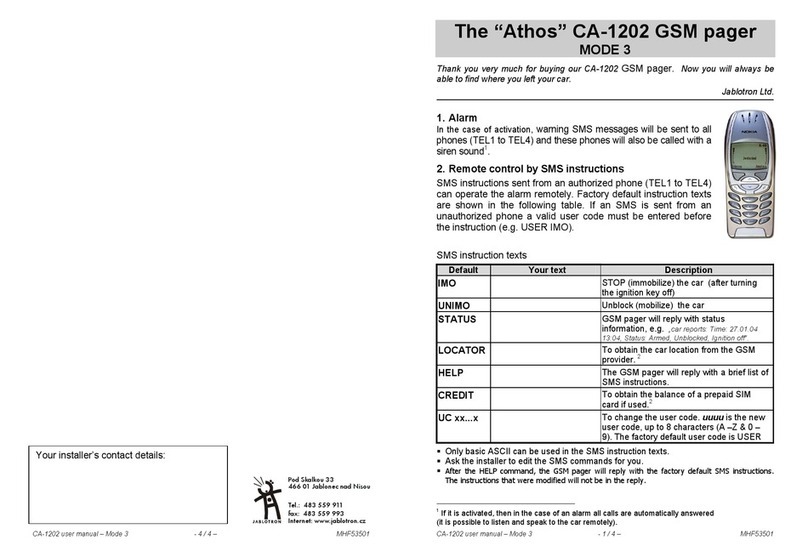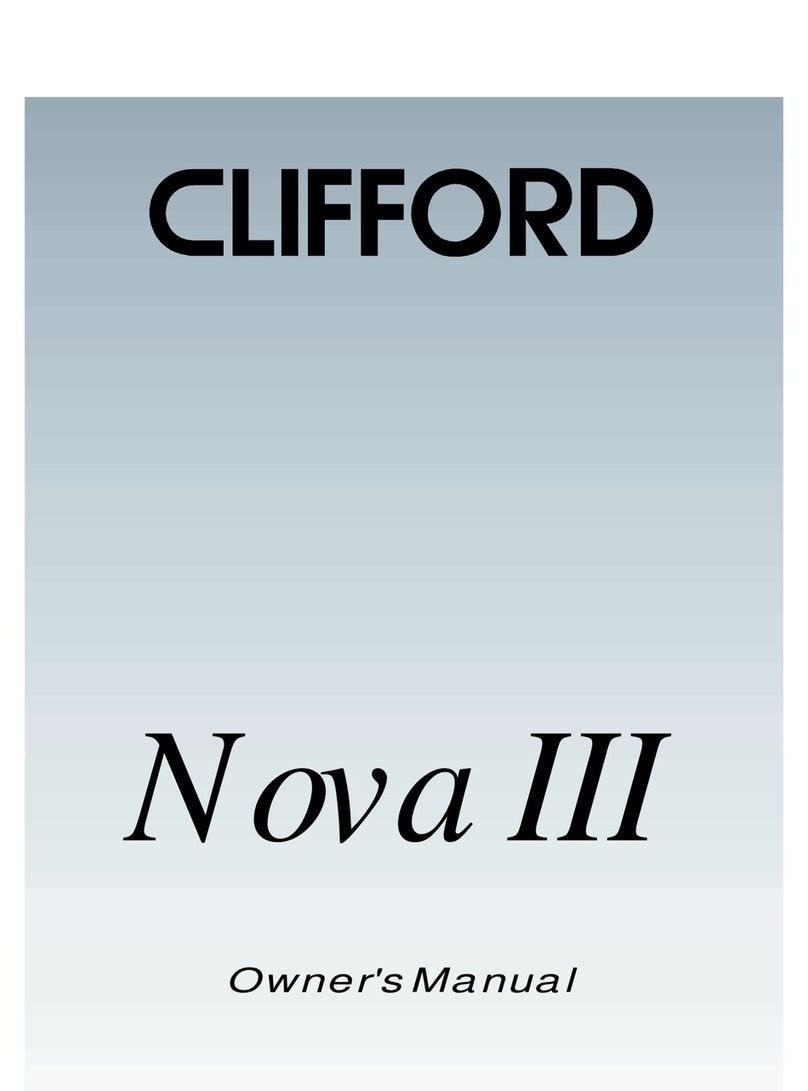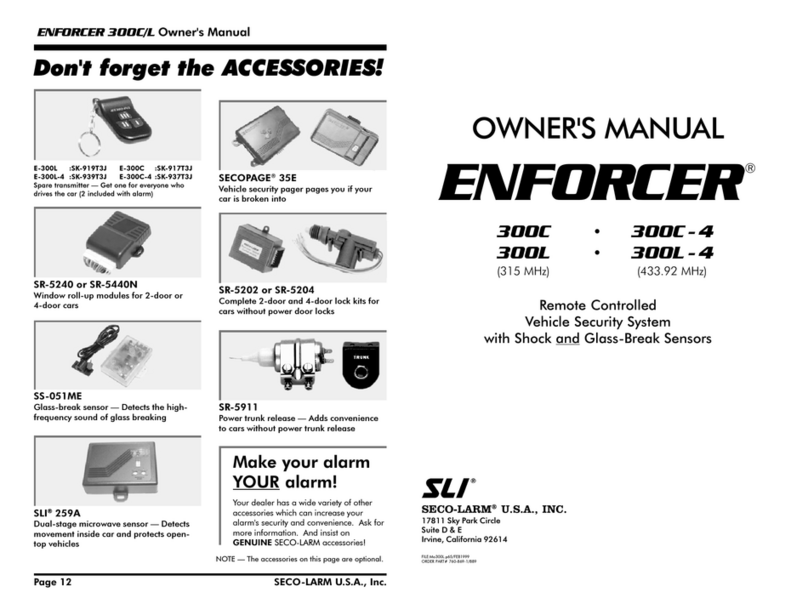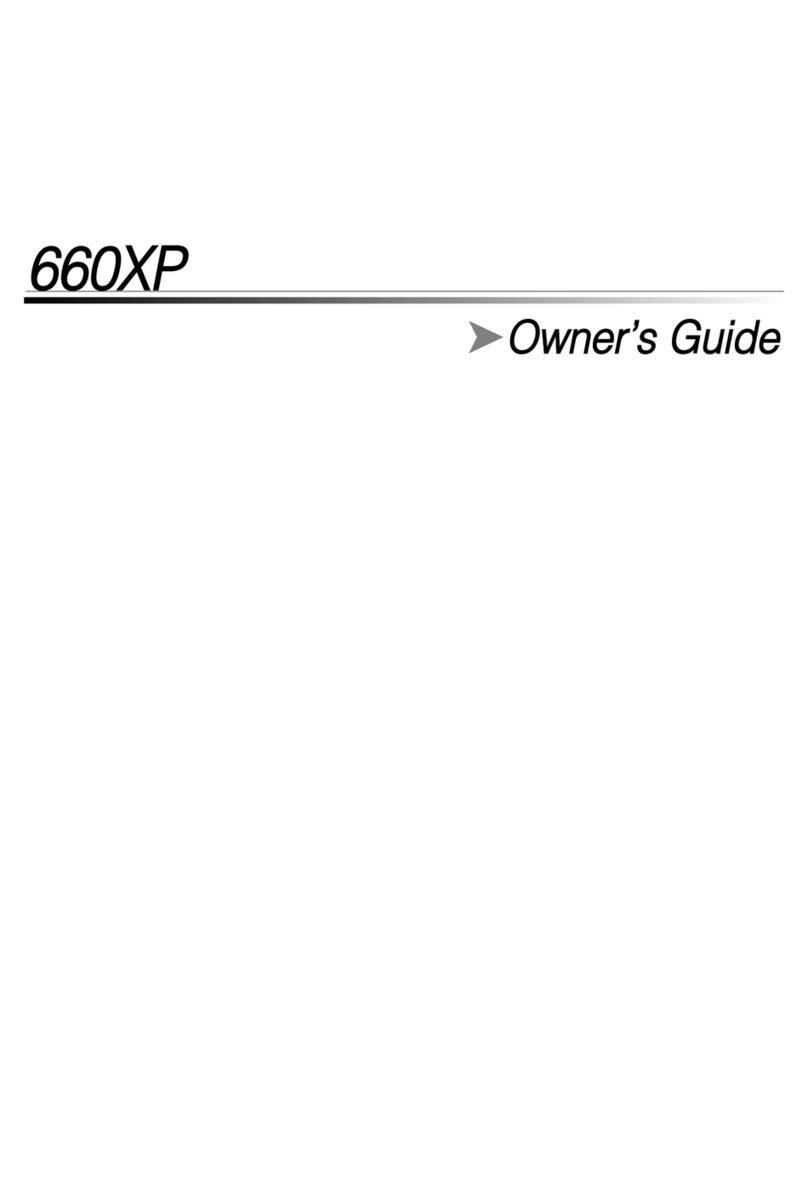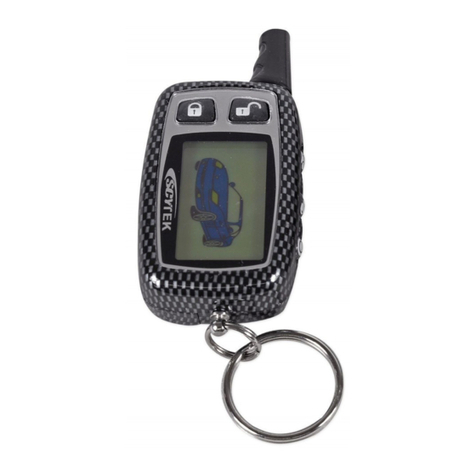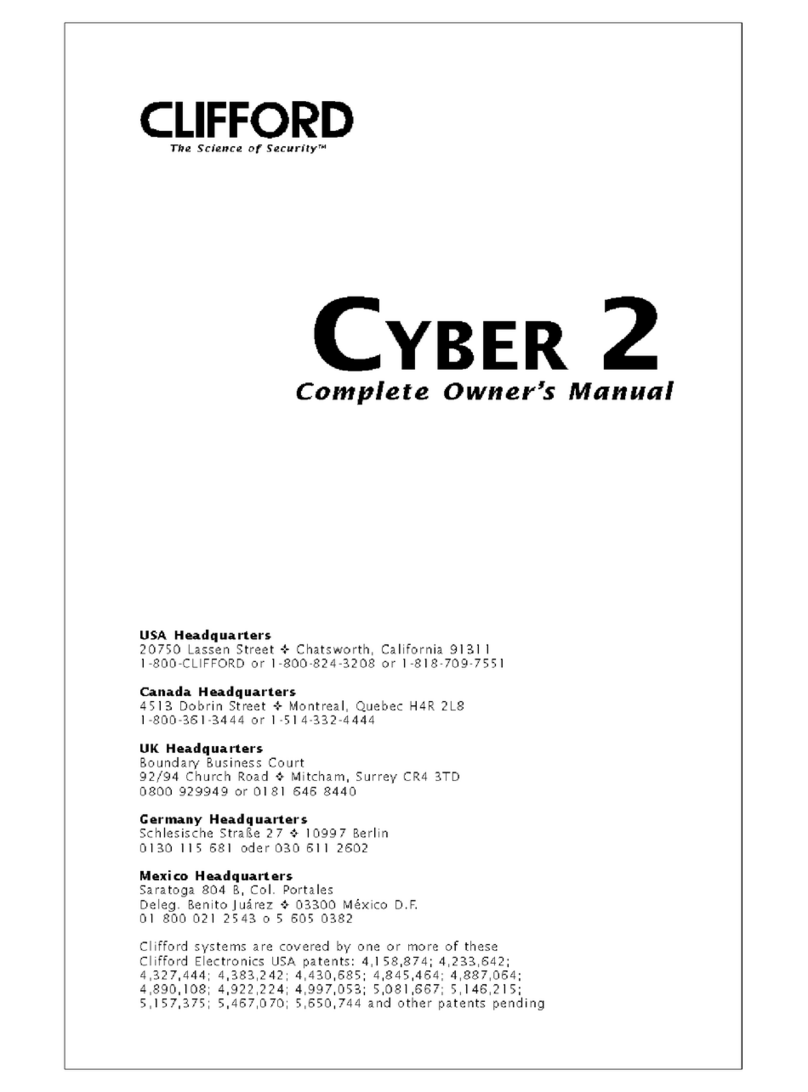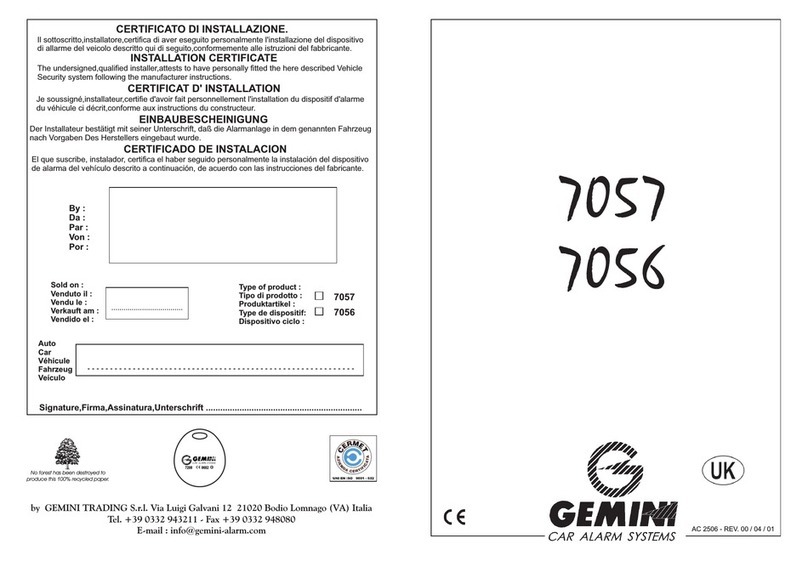22© 2005 Directed Electronics—all rights reserved
ttaabblleeooffccoonntteennttss
Code Hopping™, Doubleguard®, ESP™, FailSafe®, Ghost Switch™, Learn Routine™, Nite-Lite®,
Nuisance Prevention® Circuitry, Revenger®, Silent Mode™, Soft Chirp®, Stinger®, Valet®, Vehicle
Recovery System®, VRS®, and Warn Away® are all Trademarks or Registered Trademarks of
Directed Electronics.
wwhhaattiissiinncclluuddeedd................................................33
wwaarrnniinngg!!ssaaffeettyyffiirrsstt.............
.............................44
iinnssttaallllaattiioonnppooiinnttssttoorreemmeemmbbeerr..........................55
ffiinnddiinnggtth
heewwiirreessyyoouunneeeedd..................................66
obtaining constant 12V . . . . . . . . . . . . . . . . 6
finding the starter wire . . . . . . . . . . . . . . . . 6
finding the 12V switched ignition wire . . . . . . 7
finding the accessory wire. . . . . . . . . . . . . . . 7
finding a (+) parking light wire . . . . . . . . . . . 8
finding the tachometer wire . . . . . . . . . . . . . 8
finding the wait-to-start bulb wire for diesels . 9
pprriimmaarryyhhaarrnneessss((HH11))wwiirriinnggddiiaaggrraamm...........
.......1100
44--ppiinnssaatteelllliitteehhaarrnneessssddiiaaggrraamm..........................1100
hheeaavvyyggaauuggeerreellaayyssaatteelllliitteewwi
irriinnggddiiaaggrraamm..........1111
ddoooorrlloocckkhhaarrnneessss,,33--ppiinnccoonnnneeccttoorr....................1111
rreemmootteessttaarrtthhaarrnne
essss((HH22))wwiirriinnggddiiaaggrraamm............1111
pprriimmaarryyhhaarrnneessss((HH11)),,99--ppiinnccoonnnneeccttoorr................1122
rreellaayys
saatteelllliitteeiinntteerrffaaccee....................................1166
rreemmootteessttaarrtthhaarrnneessss((HH22)),,55--ppiinnccoonnnneeccttoorr.
.........1177
nneeuuttrraallssaaffeettyysswwiittcchhiinntteerrffaaccee..........................1188
general motors trucks, SUVs, and column
shifting passenger cars . . . . . . . . . . . . . . . . 20
pre-1996 dodge dakota pickups with 2.5 liter
motors . . . . . . . . . . . . . . . . . . . . . . . . . . . 20
bbyyppaassssiinnggGGMMvveehhiicclleeaannttii-
-tthheeffttssyysstteemmss((VVAATTSS))....2211
11999955aannddnneewweerrvveehhiicclleeaannttii--tthheeffttssyysstteemmss
((iimmmmoobbiilliizzeerrss))..................................................2222
passlock I and passlock II (PL-1 and PL-2) . . 22
passkey III (PK-3), transponder-based systems22
ooppttiioonnaallaannttii--ggrriinnddrreellaayy..................................223
3
pprrooggrraammmmiinnggjjuummppeerrss........................................2244
light flash (+)/(-) . . . . . . . . . . . . . . . . . . . 24
tach threshold on/off . . . . . . . . . . . . . . . . . 24
pplluugg--iinnpprrooggrraammsswwiittcchh....................................2255
ttrraannssmmiitttteerr//rreecceeiivveerrlleeaarrnnrroouuttiinnee......................2266
ttaacchhlleeaarrnniinngg..
................................................2288
to learn the tach signal . . . . . . . . . . . . . . . 28
ooppeerraattiinnggsseettttiinnggsslleeaarrnnrroouuttiinnee........................2288
ffeeaattuurreessmmeennuu..................................................3300
ffeeaattuurreeddeessccrriippttiioonnss...
.......................................3311
sshhuuttddoowwnnddiiaaggnnoossttiiccss......................................
..3333
rreeaarrddeeffooggggeerrccoonnttrrooll........................................3344
ttiimmeerrmmooddee.....................
.................................3355
ssaaffeettyycchheecckk....................................................
3355
ttrroouubblleesshhoooottiinngg................................................3366
wwiirriinnggqquuiicckkrreeffeerreenncceegguuiiddee...
...........................3399




